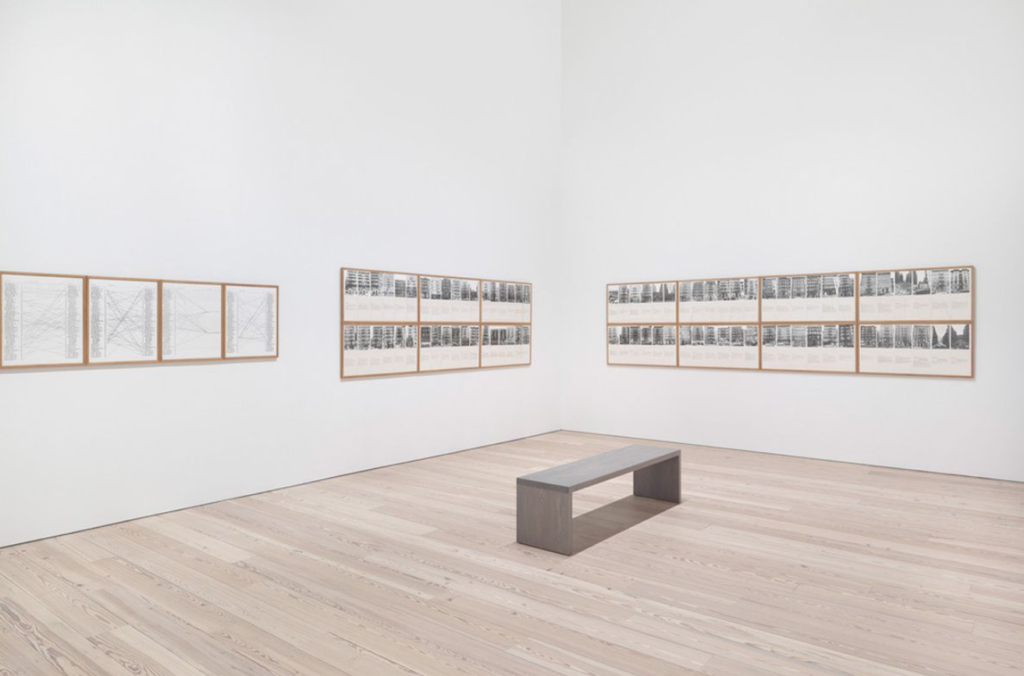Data presentation blog post by Cynthia (Xi) Hua

Shapolsky et al. Manhattan Real Estate Holdings, a Real-Time Social System, as of May 1, 1971 (Hans Haacke) was an artwork, and data presentation, that critically documented unfair land ownership in New York City.
The work consisted of 142 photographs of buildings labeled with data on their ownership, based on data across roughly a twenty-year period. The piece also included a series of diagrams created by the artist that showed how all these buildings were ultimately tied to the Shapolsky family, notorious NYC slumlords, in some way. The diagrams demonstrated how the Shapolsky family used various dummy corporations and a nepotistic business network to control large swathes of land in the Lower East Side and Harlem, while the street-level images showed the neglected conditions of the buildings. The piece revealed how housing was being bought and maintained primarily for economic profit of the wealthy owners, rather than for the quality of life of the impoverished tenants.
Haacke’s piece is an early example of data visualization as artwork. The data collection of 142 photographs reinforces the socially conscious nature of the piece — the repetition seems to say that the narrative of the work extends across this many buildings, this buildings windows, this many families. At the same time, the piece stitches disparate experiences together into one narrative. It is powerful in using the act of data collection to create a narrative of landlord abuse that would not necessarily be apparent with any individual piece of evidence.
At the same time, the piece was meant to go up at the Guggenheim, far from the low-income neighborhoods it depicts. In this respect, I think more contemporary data-based critical artworks could improve and place themselves more directly within the communities in which the operate. In fact, there were claims the Guggenheim’s Board of Trustees was itself tied to the Shapolsky family — and Haacke was later asked to remove the piece by museum directors possibly for this reason. This piece brings up a common concern in critical artworks, including data visualizations, in terms of how to navigate both within and outside of existing systems of power. It also raises the question of when and why socially-engaged projects should be presented as artworks, within museum settings, when they are also operating as objects of journalism and activism. I felt that the piece, were it to have been created today, could have been improved by incorporating activist elements that also directly targeted the problem.